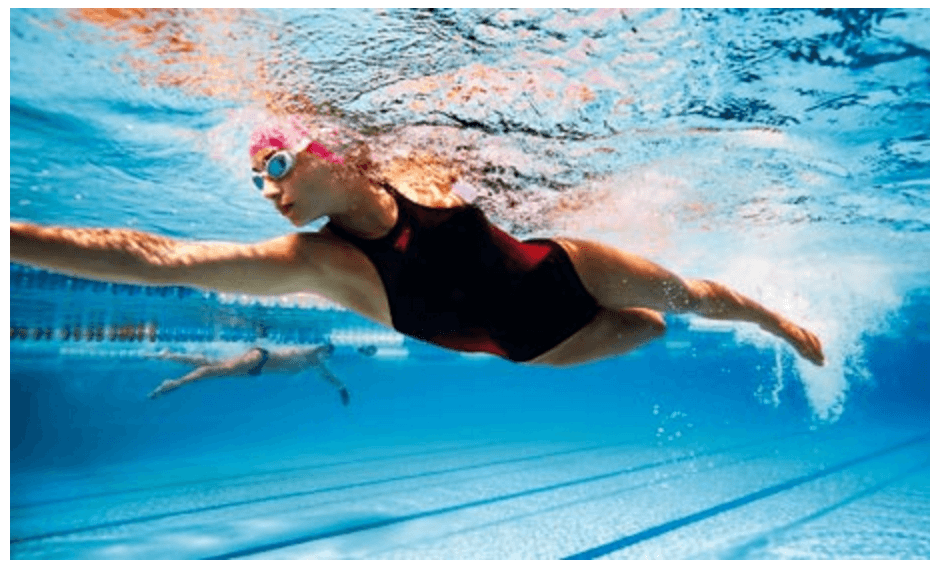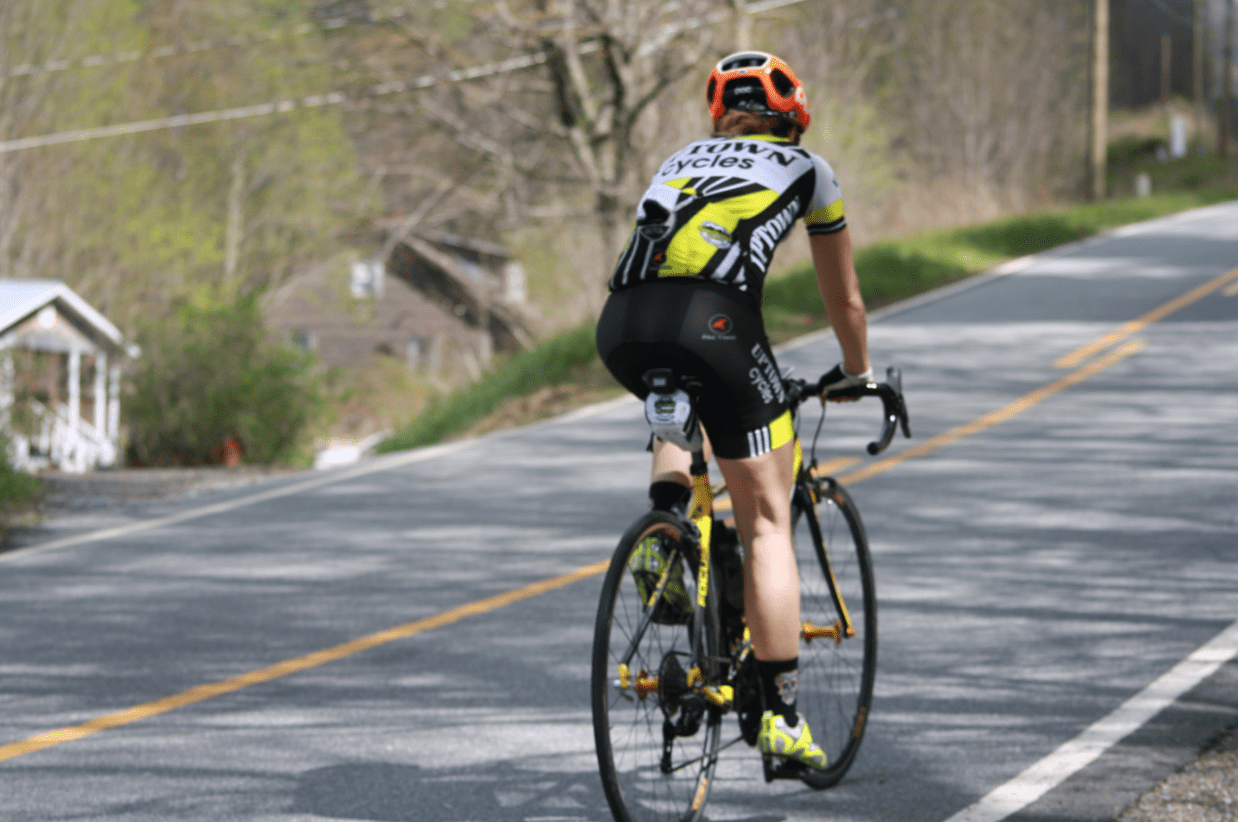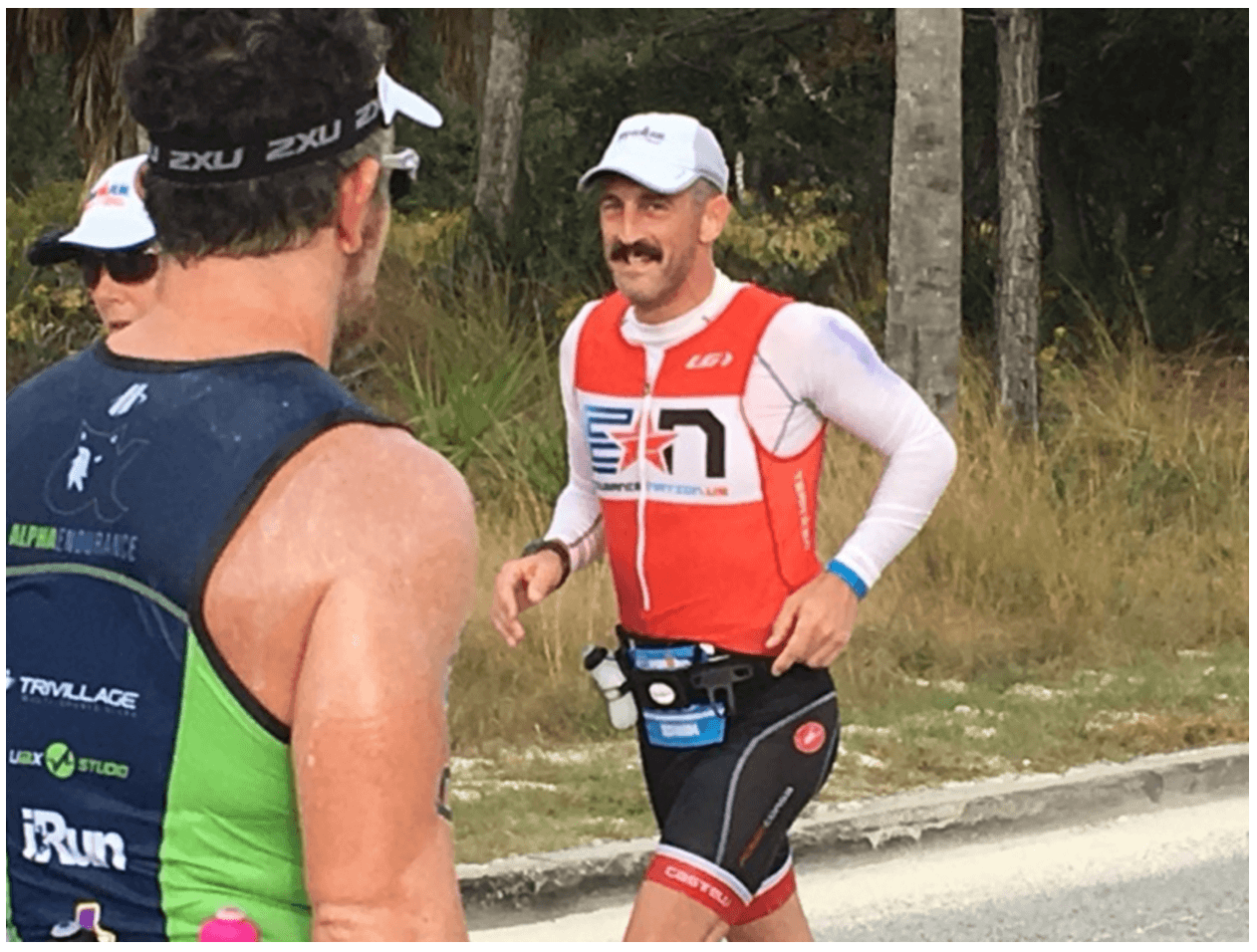 In this next installment of the Beginner Ironman article series, we will investigate what it means to keep things going at the workplace while you get ready for race day. Click here to find more articles from this series.
In this next installment of the Beginner Ironman article series, we will investigate what it means to keep things going at the workplace while you get ready for race day. Click here to find more articles from this series.
Time for the dreaded injury section. While it should come to surprise to anyone reading this book that physical challenges lie ahead, for some reason people are always surprised when it happens to them.
Doing a triathlon, of any distance, is going to put your body at risk for injury. But that doesn’t mean that the injury is going to define your race or triathlon career. Rather it’s how you handle the injury which will define what happens.
If you approach the preparation for the race with an understanding that things might go wrong, the likelihood of you handling them properly increases significantly.
Ignore what’s happening to your body and run the risk of being wildly unprepared for managing the repercussions of these injuries.
You have been warned!
A couple points before we dive into the details for specific injuries. First and foremost, know that pain is a warning. Pain is your body’s way of saying something isn’t right. It doesn’t have to mean that something is terribly wrong, but it is your body’s way of saying “Hey, pay attention!”
Instead of using your willpower to ignore that pain, be smart enough to use the pain as a guideline. Be proactive in addressing and identifying the source of that pain.
Remember that taking care of your body is also a skill set, one that many athletes ignore until they have no other choice. Plan ahead, whenever possible, so you can be ready to deal with challenges as they arise.
This could be as simple as scheduling a massage once a month between now and the rest so you have it on the books. It could be reaching out to your primary care to let them know that you’re training and that you might need a physical therapy prescription down the road. This way when something goes wrong, you can simply make a phone call instead of waiting two weeks for an appointment simply to get a prescription.
Ask your friends and trading partners about a chiropractor they recommend or podiatrist. All of this information is great to have now you can put in your Rolodex just in case you need it.
Whenever possible do your best to self-serve. Invest in a foam roller and some lacrosse balls. Do research on the best way to stay flexible and loose during your training. There are countless videos and websites of resources out there that will teach you to do the right work and how to take care of your body.
This does not have to be a massive commitment – just 10 to 15 minutes a day gives you more than an hour across any given week. Yes, even this amount of work can significantly reduce the challenges you face in your training.

Swim Injuries
The most common complaint that people have a swimmer’s is in their neck. People experience a lot of discomfort especially when it comes to breathing. Because of a specific lack of comfort in the water or lack of flexibility in the next and upper back area, triathletes will put additional strain on their bodies when it comes time to brief.
The most important the way to address this issue is to make sure that you are relaxed in the water.
This can be achieved through drills where you use fins to kick / propel yourself and improve your balance without incorporating your arms. By isolating your breathing you’ll be able to create a sustainable pattern of relaxation that will not strain your neck.
The second most common swim injury is in the shoulder. This is typically due to one of two issues: the pull or the recovery.
The Pull — During the pull phase most shoulder injuries are related to simply pulling too hard too early in the stroke. The first half of your stroke shouldn’t feel like work. You are simply getting into position to actually pull.
If you drew a line, the midpoint of that line is where your catch is the strongest…and the end of the line is where that were carry through to the finish. The front half is where you are setting up the catch.
The Recovery — In terms of the recovery cycle, shoulder pain here is typically due to a lack of body rotation. Without rotating, you will have to use your shoulder muscles alone to get your arm out and over the surface of the water. More often than not this can be addressed through improved body rotation in the water.
By increasing your rotation and turning your bellybutton more towards the side of the pool as your hand extends out in front of you under water, you will give ample room for your shoulder and arm to recover without needing to stress that joint.
Finally, if you do have a lower extremity injury is typically from overtaking or pushing off of the wall. In either case it’s important to remember that your legs are not the driver in your swim stroke. It’s worthwhile trying to focus on approved body position to reduce the amount of work required to push yourself in the water.
Good swimming should almost feel like running down a slight hill. Your position is forward and engaged in the water — your legs are trailing behind you (instead of driving forward) inside the tube created by your upper body.

Cycling Injuries
There are a wide variety of potential issues that can come from cycling and I’ll only be able to address a few here.
The Bike Fit
On a macro level, the most important thing you can do to prevent any cycling related injuries or discomfort is getting a good bike fit. There are some well-known options for bike fits although they can be expensive. You may be able to find a good fit or in a neighborhood through your local team or club network. Or maybe you will use an online option.
Whatever you choose, make sure but you really trust the person and you have their commitment to get you fit properly on the bike. I say that because sometimes it may take several tweaks or iterations until you feel 100% good.
Lower Back Pain
This is typically due to the fact that we have very tight hamstrings which already put stress on the lower back. Add to the fact that we insist on using aero bars for speed, and you have a recipe for strain of lower back.
A good fit will help you take care of your back and reduce the chance of discomfort. You may also benefit from doing core strength work to allow those muscles help stabilize you and reduce some of the pressure that you feel in your back. While you are addressing such an issue you may find comfort in riding out of the aero bars.
Knee Pain
There are a wide variety of potential issues that could lead to knee pain including seat height, a forward seat position, or weak stabilizing muscles. Whatever the cause may be, what’s happening here is that your joint is experiencing additional stress to the point at which it can’t properly function.
Someone you’re riding with can probably eyeball your seat height and let you know if you’re too high or too low. Members of Endurance Nation will often post pictures of themselves on a stationary bicycle trainer for feedback on their overall position as well as the four aft position of their saddle.
If you do have a stabilizing issue that can often be remedied through physical therapy and/or a good self-guided strength program at home. This doesn’t have to be a lot of work but it does need to be the right work in order for it to have the most benefit.
Numbness & Tingling
There are some micro-issues that crop up and may revolve predominately around numbness and tingling. Many new cyclists will report a tingling sensation in their hands or sometimes even on the balls of their feet. This could be due to the additional pressure you’re feeling on these two points of contact with your bike.
Your hands may be fixed through better bar tape that is softer or by using cycling gloves. It could also be that your seat position is off forcing a place to pressure in her hands.
As for your feet, cycling shoes are very rigid on purpose. Those of you who have dynamically moving feet or high arches may struggle to effectively use the flatter platform of a cycling shoe. Choosing a shoe that has a proper insert to accommodate your arch and your foot may offset some of that discomfort. Again this could also be a point or some other trading partners or teammates give you some good advice on how to improve things.
Saddle Discomfort
There’s no such thing as the perfect saddle, only the right saddle for you. Once you find out saddle never let it go because going to the process of finding one that does not cause discomfort is very difficult.
Everyone has their own preferences around the contour in size and dimensions of a bicycle seat. More often than not it has to do with how you ride the bike — not how your anatomy is structured.
As long as you have a good pair of bicycle shorts on and some chamois cream, technically any saddle should work. Hopefully your local bike shop will understand this and will give you the opportunity to try out several models before you make a purchase.

Running Injuries
It’s worth noting that running injuries are the most insidious of all triathlon setbacks.
A running injury can set you back significantly, limiting your training and causing the most damage to your season and fitness. Taking some time off from swimming or having to change how you ride the bike is fairly easy. But most of us will not be able to find a sufficient work around for the missed run training should things go wrong.
I say all of this so that you know how to act appropriately if and when you do experience pain and discomfort running.
Preventative Maintenance
Smart endurance athletes engage in an annual program of preventative maintenance designed to keep them healthy and happy. This doesn’t have to be very in-depth or complicated or require the installation of a home gym.
There is a very simple set of exercises you can do in a very old house to keep the requisite strength that will make you a happy runner. The three areas but you should focus on at a minimum are your glutes, a.k.a. your butt muscles, your core, and your abs.
If you can make sure that all three areas are strong active and flexible your run training will most likely have minimal hiccups. Do yourself a favor and search online for some options on appropriate warm-ups and functional strength training for glutes to make sure you are all set.
There are five specific run injuries that impact most endurance athletes. I will list them below and understand that if you have such a condition, you should absolutely checked in with the medical professional and get a program designed to get you back on track.
Run Injury Number One: Plantar Fasciitis
Plantar fasciitis is an inflammation of the bottom of the foot and is the most common running injury. This injury is easily identified by a sharp painful sensation at the base of your heel. You typically feel it getting right out of bed and also as you warm up with your run.
The tricky part about plantar fasciitis is that as you warm up and start running it actually goes away during the run only to come back even worse as recover. You can easily look into orthotics to help improved support area of your foot but these tend to be quick fixes.
In the short term you can make sure to wear supportive shoes, strengthen your calves and the role the bottom of your foot on the lacrosse ball. Perhaps you might even want to look into ART as a solution to help get mobilization back in the tissues.
Over the long term a good stretching program with strength exercises around your feet and calf will make sure that you don’t have a recurrence of this problem.
Run Injury Number Two: Achilles Tendinitis
This is, simply put, the inflammation of the Achilles tendon. This manifests itself as pain in the back of your lower leg just above your heel in the Achilles tendon. This is the thick tissue that connects her calf muscles to the heel bone.
More often than not tight calves of the problem here and bowling instruction these out will get you back on track. You might also find that on supportive footwear is the issue or a quick increase in volume. Make sure that your shoes are up-to-date and that you’re constantly stretching us comes out to avoid this problem.
Run Injury Number Three: IT Band Syndrome
The IT band is a tendon that connects you need to your hip. You have IT band syndrome when this becomes inflamed. It can feel anything from a dull ache to a sharp stabbing pain the outside of your knee. Given that this is a tendon, it’s harder to focus on like a particular willful but unaddressed can become very debilitating.
The quickest short fix is to make sure that you’re running on a level surface — avoid avoid down hills and roads with steep shoulders that will put more stress on one foot than the other. You can also massage your quads and hamstrings to allow them to move dynamically without the use of the tendon.
Icing and anti-inflammatories will also help calm things down. Moving forward to your best to avoid aggressive downhill running and strengthen those hips and glutes to make sure that you have good alignment to prevent any future pain.
Run Injury Number Four: Runners Knee
This often manifests itself as a dull ache underneath your kneecap when you run. This is professionally known as Patellofemoral syndrome. There can be a variety of causes here from uneven running surfaces to bad shoes to weak hips.
The first thing to do if you have knee pain is to stop running. If you have inflammation, get it down using some anti-inflammatories and ice. Then strengthening the knee while making sure your footwear is up-to-date will usually do the trick. Additional change options could include shortening your stride to prevent additional stress on the knee.
Run Injury Number Five: Shin Splints
This is also a very common setback and can be as painful as it is weird. Shin splints can apply to literally any shin injury that a runner has. Not addressed, a shin splint could turn into a stress fracture!
More often than not, shin pain is the direct result of a significant change in your training volume. So reduce your run volume for a while and ice those shins to keep things loose. Make a note next time to avoid that issue with a better progressive mileage build.
Make sure that your shoes are up-to-date and that you run on softer surfaces as you begin to get back to longer distances. Lastly, don’t forget to track your weekly mileage and make sure that you do nothing aggressive that could set your shins off again.
Bonus Run Tip: Maintaining Flexibility
Feel free to implement your own flexibility routine. This could be something as simple as 15 minutes two or three times a week. You should be able to do a wire watching the news or listening to your favorite program. Your routine should incorporate the major areas of your triathlon system: the quads, the hamstrings, the hips, and your shoulders.
This routine is critical because as your body adapts to the training load you will notice restrictions or even discomfort in certain areas. Having a baseline understanding of what your legs normally move like without excessive training load will give you perspective to know when things are going wrong. Then you can reach out for professional help long before you run into a serious problem.
Using Run Jail To Your Advantage
One of the best parts about being a triathlete is that you have three different sports you can train them. Should something go wrong with your run, you can simply increase the number of bike sessions you have or, spend more time in the pool.
But as I mentioned earlier, when you have pain with your running you should really consider taking time off to keep damage to a minimum. As you get back into running you can do it in deep water (a.k.a. the pool) or even on an elliptical.
Anything that involves reducing the impact of your running stride will make a difference. These are good transitional exercises that will take you from no running to some running by making sure that the right muscles are awake and prepared for the strain of running again.
When you do return to running on the road we suggest you do so very cautiously. We are big fans of using consistency versus volume or intensity at the outset. This means 10 minutes of running a day, every day, is better than a 40-minute run the first time you run again.
Starting and stopping the run process is an opportunity to reflect on how things are going. Reducing the total run goal time to such a small number will allow you to feel success without the frustration that accompanies with cutting short a run that was too long to begin with.
The more flexible and patient you can be in choosing your workouts, the healthier you will be on race day and the fewer injuries you will experience.
No matter what happens understand that you will most likely have an injury. Stay focused on what you can control, navigate the training cycle to enable your recovery, and you’ll be on the right path to long-term triathlon success!



Leave a Reply